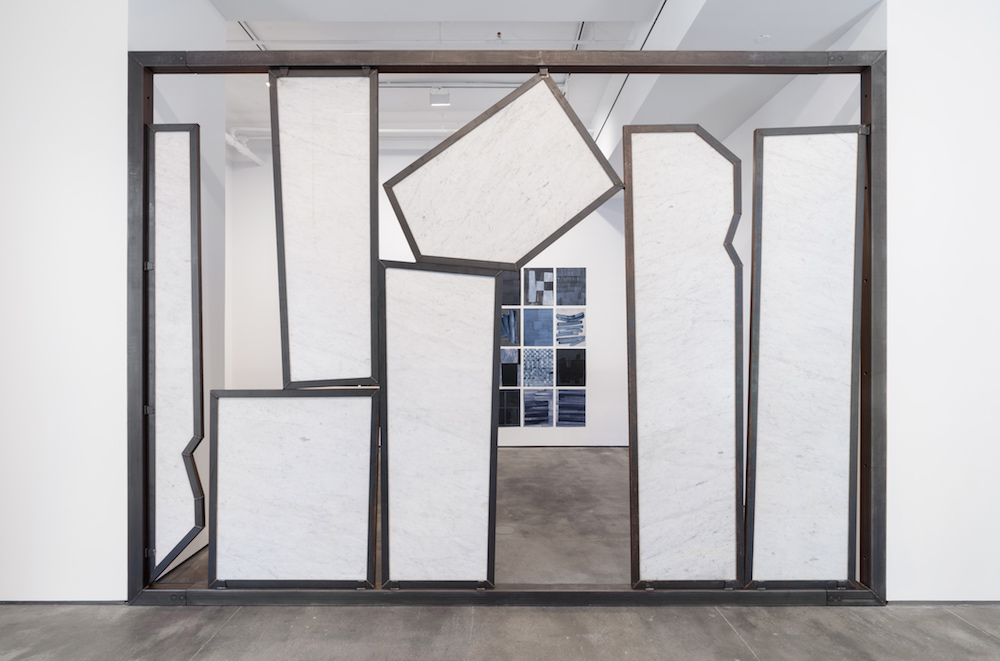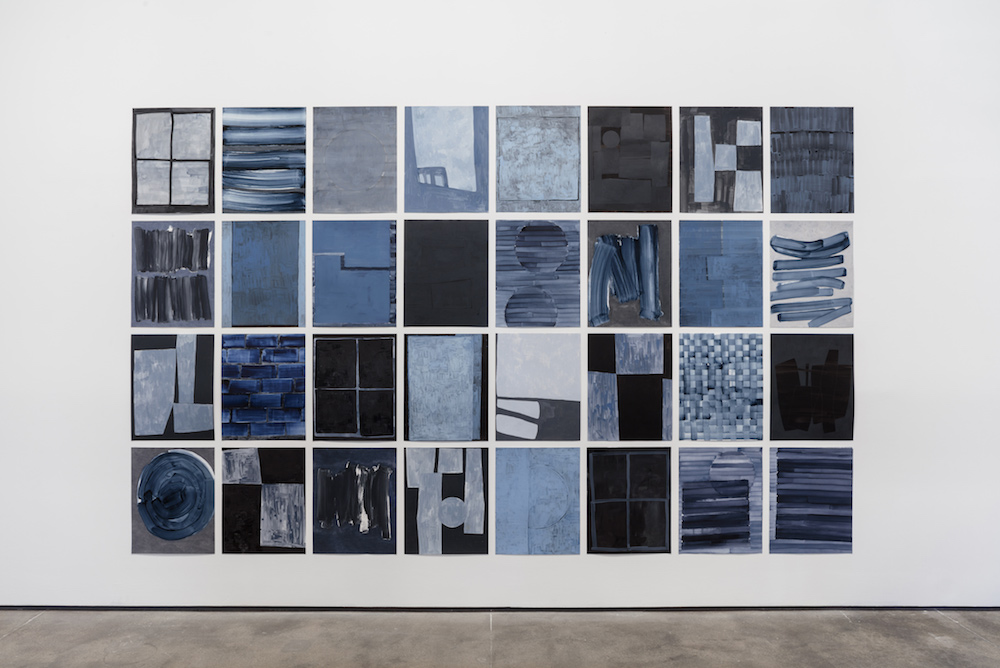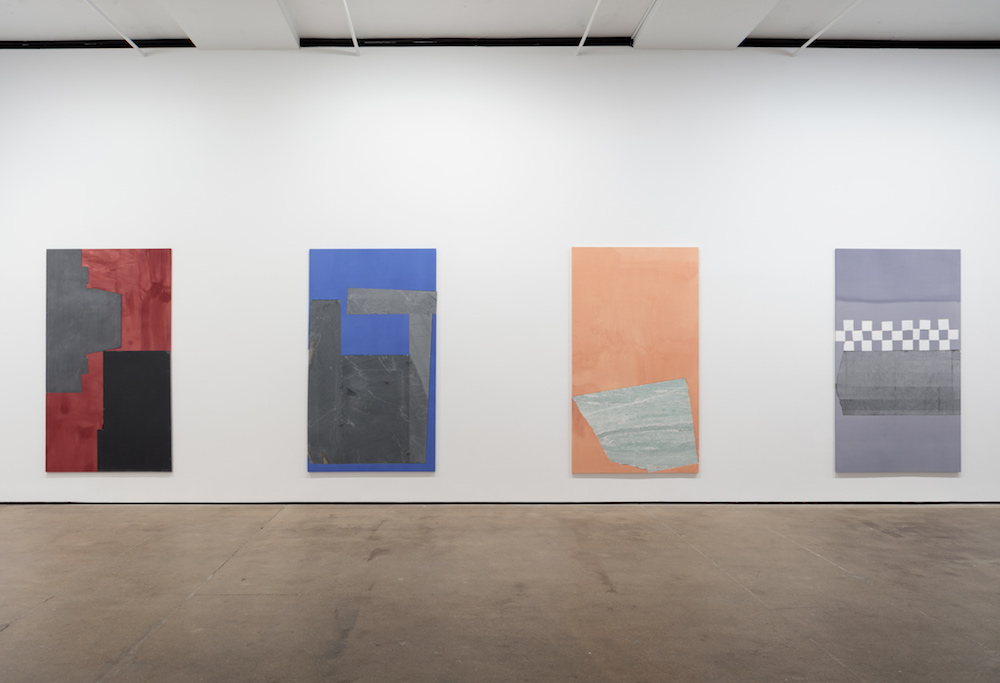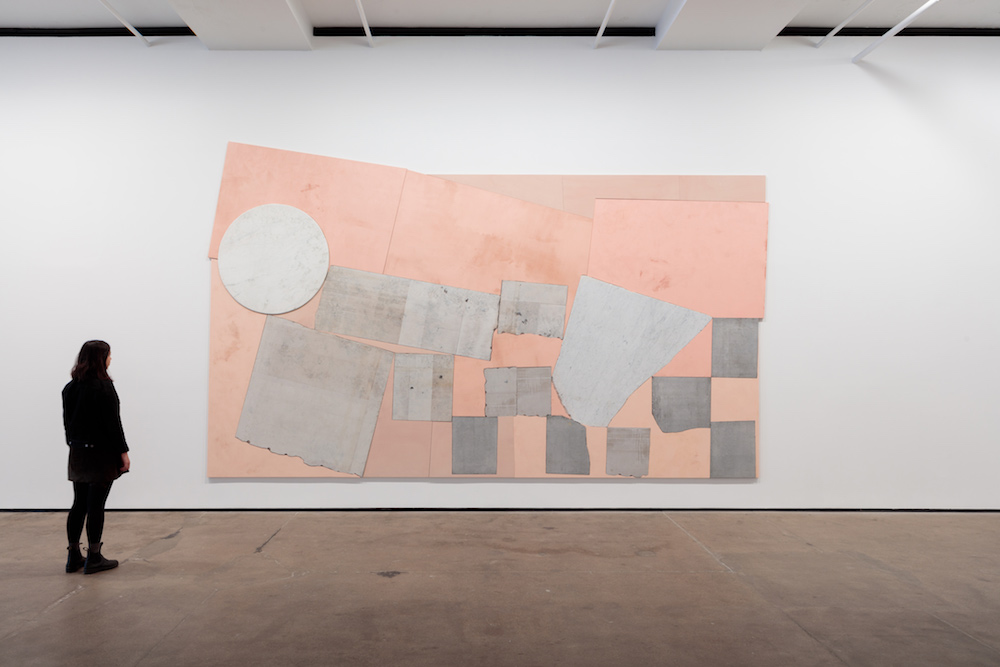 In your new exhibition at Sean Kelly you show wall-based works, but also a large-scale sculptural installation that acts as a portal visitors can walk through. How would you describe the way your practice operates between painting, sculpture and architecture?
In your new exhibition at Sean Kelly you show wall-based works, but also a large-scale sculptural installation that acts as a portal visitors can walk through. How would you describe the way your practice operates between painting, sculpture and architecture?
The goal is to create work that exists in the space between assumed material roles and defined categories. If a piece balances the physical density of sculpture while echoing the speed or lightness of a drawing, it is an experiential success for me. The polarity of being and thinking is where we find empathy.

This is the first time you’ve included hand-painted canvases in your paintings. What drew you to use this process here?
It was time to bring my hand into the work. The ready-made stone matched with the specific intention of the hand creates a more balanced contrast that lends strength to each counterpart.
Some of the way that you with work your materials really reminds me of Mies Van Der Rohe’s Barcelona pavilion and other modernist buildings. What architectural inspirations do you have?
It’s a long list! I have been very inspired by Gordon Bunshaft, Ossipoff, Schindler and Breuer, the entire mid-century modern movement for its marriage of the interior and exterior. Conceiving of architectural structure as a response to the environment it’s built in, pushing the boundaries between nature and the manmade by inviting in boulders and eliminating walls in favour of glass, allowing natural light and the landscape to be an ever-changing element of design and experience.

In previous bodies of work you have reclaimed materials from, for example, stone table tops—incorporating them in a way that makes them appear as chunks of raw material again. How have you sourced materials for this body of work?
All of the stone I use is repurposed remnants, essentially trash from larger projects. The stone holds the marks of previous experience, and often you can see evidence of the original intention, the shape of an outlet hole or the overcut of a counter corner. Some of them are discarded tabletops reminiscent of specific designers such as Saarinen. Often I find pieces that have the original drill marks from mining the stone, and then there is the staining left on a slab created by its life outdoors. Collecting the stone is a substantial part of my practice.
The title of the show, Wide Wake, acts as an acknowledgment of the influence of a line of artists who came before you. How important do you feel an understanding of the history of art is for artists making work now?
It’s too subjective to say. It’s not my grasp of art history that I am referencing, rather paying homage to specific works and artists that have left an imprint on my mind, sometimes subconsciously.

Wide Wake
Until 16 December at Sean Kelly, New York
skny.com
Images: Installation view of Sam Moyer: Wide Wake. Photography by JSP Art Photography, courtesy Sean Kelly, New York





